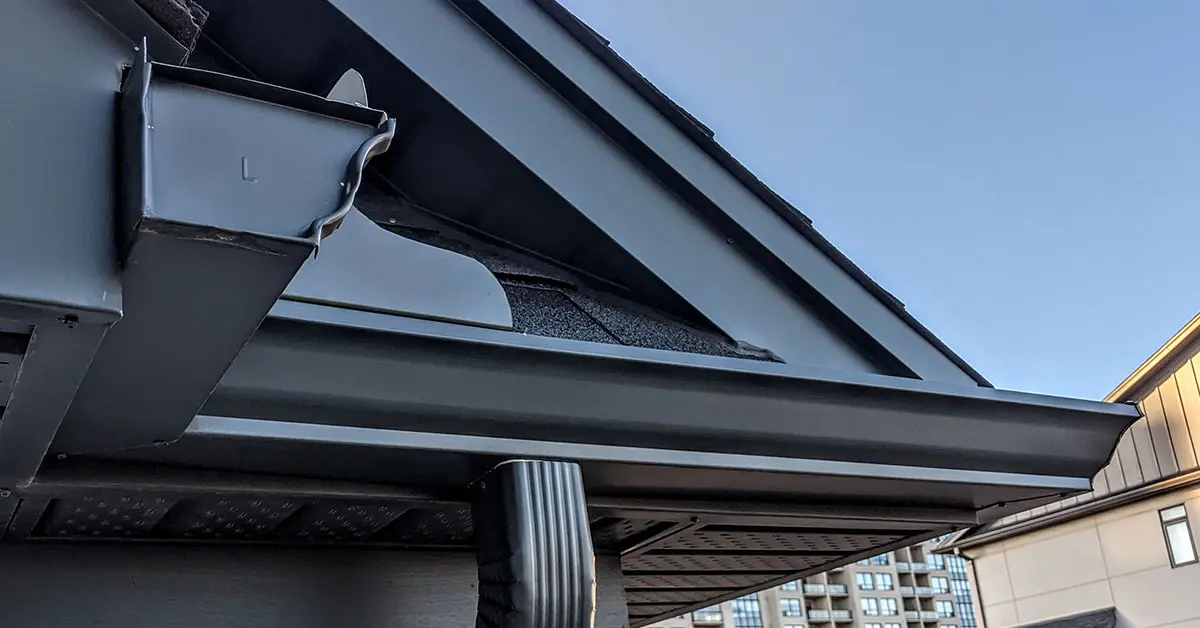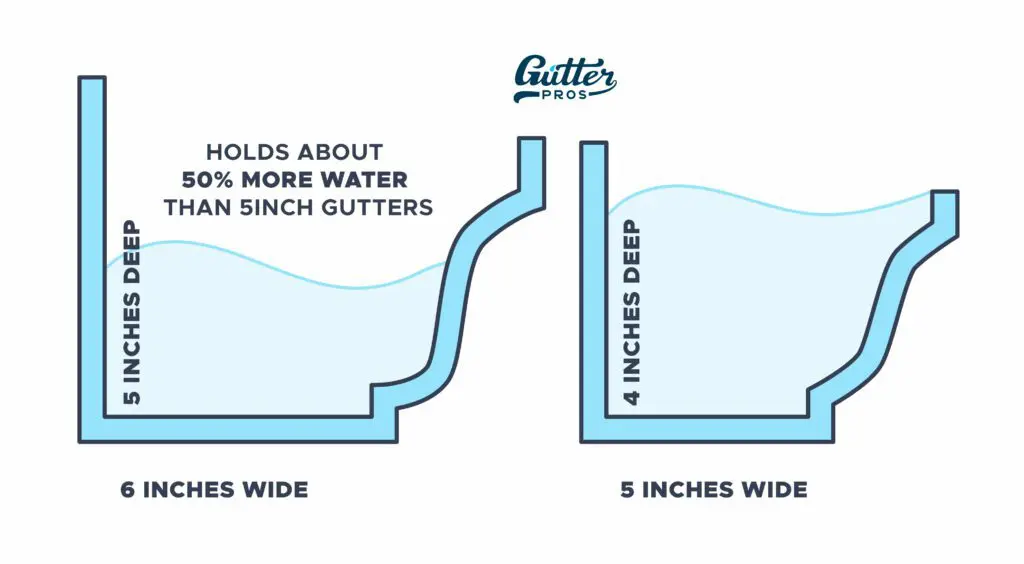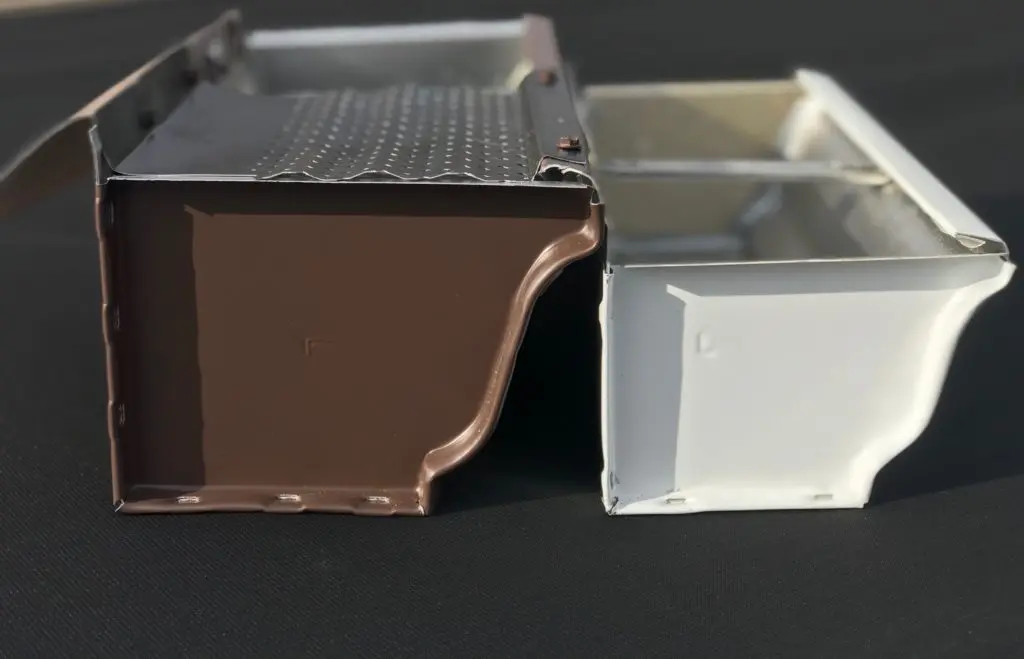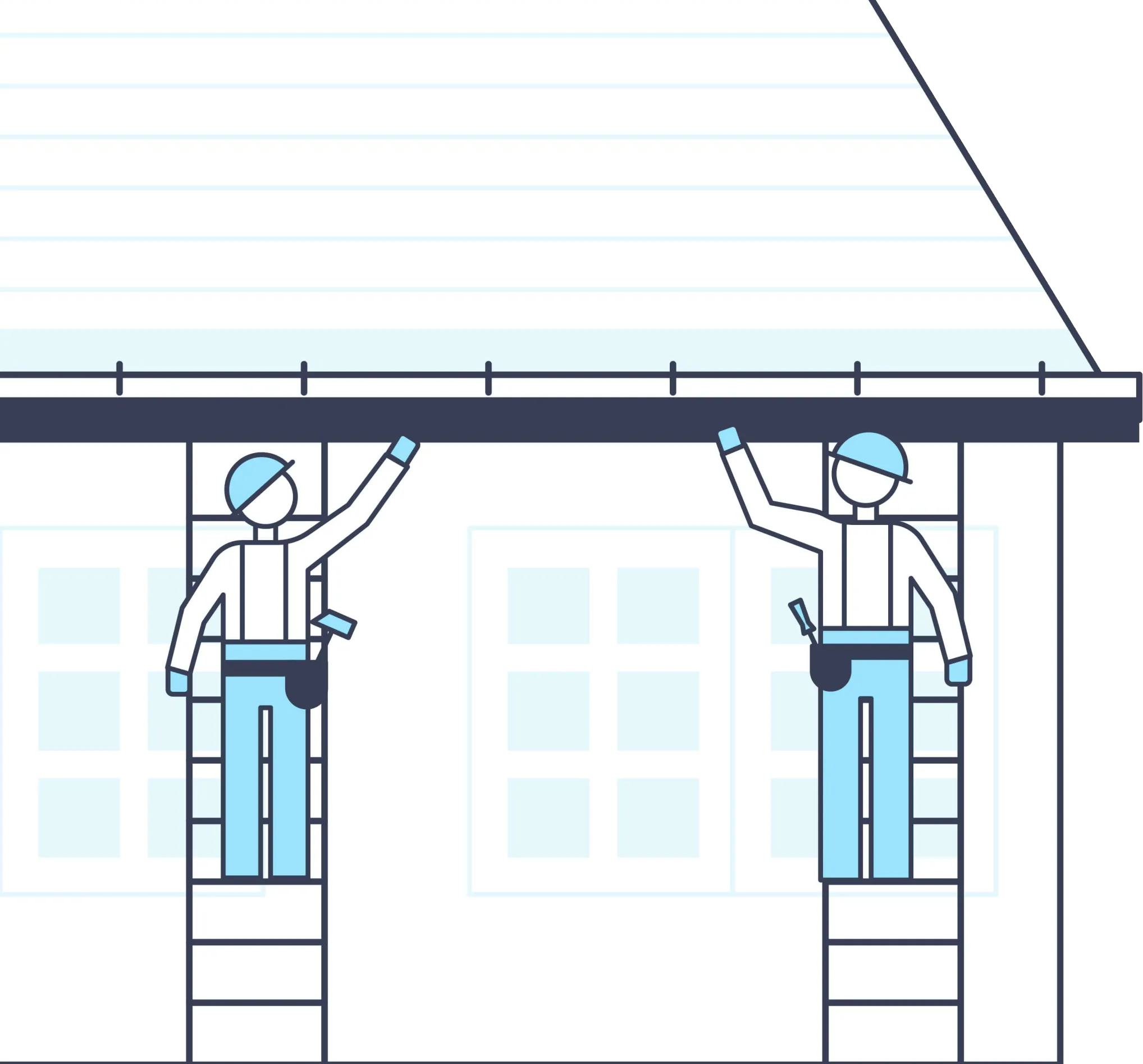

You already know the benefits of a seamless gutter system, but we know you’ve been losing sleep wondering what the difference is between 5-inch and 6-inch gutters and which is the right choice for your home. Good news! We’re here to break down details of the two most common gutter sizes so you can make an informed decision.
There are many different gutter styles and types, including galvanized, commercial, half-round, and others. When you picture gutters on a house, there’s a high likelihood the type you visualize is K Style, which makes sense because it’s the single most popular variation installed in North America. The typical size of K Style gutters installed is a toss-up between 5-inch and 6-inch. And, yes – that extra inch does make a difference, as you’ll find out below.

As you can see in the picture above, that one extra inch makes quite a difference. In fact, 6-inch gutters can hold about 50% more water than 5-inch gutters! When choosing the size of your gutter, we need to take into consideration a couple of factors:
The optimal size of the gutter you need will depend on the amount of water the gutter needs to handle. The bigger the square footage of the roof, the more water goes into the gutter.
For example, if your roof’s plane is 600-800 square feet, you should be fine with having 5-inch gutters. The plane refers to one complete area, which includes four edges, typically one side of a gable or hip. On the other hand, if your roof’s plane is 1,400+ square feet, we recommend putting on 6-inch gutters as this results in double the water amount going into your gutters.
If you recently replaced your roof and your roofing contractor extended your shingles more than 1.5 inches past the roof edge, water will most likely overshoot the gutter during a heavier rainstorm. In this case, we also recommend a 6” gutter as a longer overhang equals less water in the gutter.
Pitch – aka, how steep your roof is – is another key factor to consider when choosing your gutter size. The speed at which water gets directed into your gutter increases with the pitch.
A higher pitch results in a higher speed of water flow. Gutters need to be appropriately selected to accommodate water accumulation and get it delivered to the downspouts and away from the structure of your home. It’s possible that even if you have a roof plane in that 600-800 square feet range we mentioned above, but the pitch is very steep, you may be better off with 6-inch gutters.
At the end of the day, it comes down to how much rainfall your area gets. If you live in a dry environment that does not get much rainfall, 5” gutters could be good for you. In the Chicagoland area, we recommend 6” gutters for a lot of homes.
When choosing the gutter, you may want to take the size of your fascia boards into consideration as well. The wider the fascia, the smaller the gutter will look. So, if your fascia is 1”x6” you are most likely going to install 5-inch gutters. If your fascia is 1”x8” or 1”x10” you are going to need 6-inch gutters to keep everything looking proportional.
6-inch gutters can handle almost 50% more water than 5-inch gutters. They are installed with bigger 3”x4” downspouts for better water management. 6-inch gutters are less likely to get clogged up because they can handle more water flow, and they come with a bigger outlet. If you have a small home with a roof that isn’t very steep, 5” gutters will suffice. Otherwise, go for 6” gutters. Whichever size you decide to go for, make sure to check the materials and components your contractor uses; you can learn more about what makes a great seamless gutter system here.

6 inch gutters can hold about 50% more water and are 1″ wider (at the top) than 5 inch gutters.
Measure the width of the gutter at the top. This will correlate to the size of gutter you have. Example: if it measures 6″ then you have a 6″ gutter.
Measure the width of the gutter at the top. If it is 6″ then it means you have a 6 inch gutter system.
This depends where you live, but typically the difference is about $3-5 more per foot for 6 inch gutters.
Call us: (773) 999-2079
Fill in the form below and we will get back to you as soon as possible

